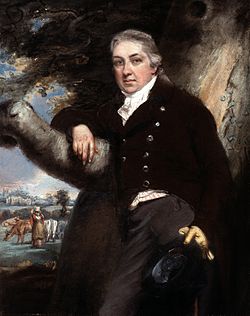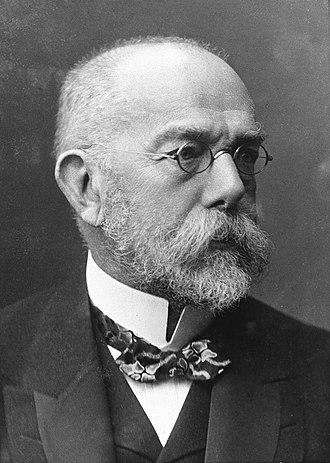Hygiene
Hygiene is the science of preserving health , in the sense of caring for the mental and physical health of an individual: personal hygiene, mental hygiene , domestic hygiene, dental hygiene and occupational hygiene , used in connection with public health.
Hygienic procedures are important as part of prevention , they reduce the occurrence and spread of diseases.
Specific examples: provision of quality water and food , quality nutrition , clothing, issues of work and physical exertion in general , sleep , personal cleanliness, abuse of tobacco , alcohol or narcotics, climatic conditions, soil, building materials and issues related to housing, waste removal , funeral services etc.
The name is derived from Hygieia , the Greek goddess of health (daughter of the god Asclepius and Epione). She is depicted as a woman with a snake drinking from a bowl in her hand.
Hygienic practices are culturally and socially differentiated.
The measure of the effectiveness of the hygiene service is what it prevented, so it is often not possible to critically evaluate the successes and failures of the procedures themselves. Preventive hygiene practices are necessary for the sustainable development of the human population.
History of hygiene[edit | edit source]
Codes of hygiene can be found in several Hindu texts such as the Manusmriti and the Vishnu Purana . Bathing is one of the five Hindu daily duties. Some of these (and similar) rules of ritual purity improved hygiene even from today's epidemiological point of view.
Regular baths were an achievement of the Roman civilization . Spas that were built in urban areas were meant to serve the general public to maintain personal cleanliness. Water was supplied to the spa by aqueducts. Roman cities had good sewage systems and collection points for the contents of latrines.
Until the end of the 19th century, toilets were usually only available to wealthy citizens. The poorer majority only had designated places in the ground behind the buildings that served these purposes. However, this changed after John Snow discovered that cholera was spread by faecal contamination of water.[edit | edit source]
See the Epidemiology page for more detailed information .[edit | edit source]
Louis Pasteur[edit | edit source]
An important figure in the development of the field (especially in terms of the origin of diseases , food processing methods and vaccination) was the French microbiologist Louis Pasteur (1822–1895).
He discovered that by boiling milk, most of the microorganisms present are eliminated, and this reduces its spoilage (also wine, beer). This process is now called pasteurization .
He described as the first process of anaerobiosis ( the Pasteur effect ), he managed to prove with certainty the correctness of the germ theory (infection transmitted by microorganisms), he proved that fermentation is the result of bacterial activity.
Pasteur developed the rabies vaccine . He used weakened strains grown on rabbits, from which the affected dried nerve tissue was used for the vaccine itself.
Pasteur developed the rabies vaccine . He used weakened strains grown on rabbits, from which the affected dried nerve tissue was used for the vaccine itself.
Edward Jenner[edit | edit source]
Edward Jenner (Edward Jenner (1749–1823) was a British village doctor famous for introducing the first smallpox vaccine . He discovered that milking cows do not get smallpox, so he deliberately inoculated an eight-year-old boy with pus from a boil caused by cowpox. The boy contracted cowpox, but within six weeks he was completely cured. Jenner then infected him with a smallpox vaccination dose. According to Jenner's assumption, the boy did not develop the disease, and this attempt is considered the first real vaccination.
However, the Chinese already applied material from pustules and crusts from recovering patients to the excoriations of other individuals with the aim of preventing the disease from spreading further.
Also in Turkey, they had a similar vaccination method, which consisted of intentionally infecting an individual with variola from the pus of convalescent patients, as the virus is weakened in this material (today we call it variolization ).
Robert Koch[edit | edit source]
Robert Koch (1843–1910) was a German physician and microbiologist, the founder of bacteriology and a Nobel Prize winner. He discovered the causative agent of tuberculosis ( Mycobacterium tuberculosis , Koch's bacillus), cholera ( Vibrio cholerae ), anthrax ( Bacillus anthracis ) and purulent conjunctivitis ( Haemophilus aegypticus , Koch-Weeks bacillus).
Tuberculin, which we use today as a diagnostic substance in the tuberculin test , when we demonstrate the presence of antibodies against TB in the patient's body.
Koch's postulates (criteria for recognizing a microorganism as the causative agent of a disease):
- The microbe must be found in all cases of a given disease and in all target sites.
- The microbe must be isolated from an infected host and must be culturable in vitro.
- A pure culture of the microorganism must produce typical disease symptoms after inoculation into a susceptible individual .
- The microorganism must be recoverable from an experimentally infected individual.
Stanislav Provázek[edit | edit source]
Stanislaus von Prowazek (1875 Jindřichův Hradec–1915 Cottbus, born Stanislav Provázek) was a Czech microbiologist and parasitologist who together with the pathologist Henrique da Rocha Lima discovered the causative agent of Rickettsiosis ( Rickettsia prowazeki ).
Alexander Fleming[edit | edit source]
Sir Alexander Fleming (1881–1955) was a Scottish physician noted for the discovery of the bactericidal effects of lysozyme and the bactericidal action of penicillin from the fungus Penicillium notatum .
In 1928 , he discovered that the mold Penicillinum notatum , which was introduced into a Petri dish of bacteria through an open window in the laboratory, produced substances that killed certain strains of bacteria. In 1941, penicillin began to be mass-produced and used in medicine. Together with Ernst Chain and Howard Florey, he received the Nobel Prize in 1945 for his discoveries. Rickettsiosis
Polio vaccines[edit | edit source]
Jonas Edward Salk (1914–1995) was an American scientist who developed an inactivated poliovirus vaccine , which is administered subcutaneously (IPV).
Albert Bruce Sabin (1906–1993) was an American who invented the oral attenuated (weakened, Sabin) poliovirus ( OPV) vaccine in 1955.
Polio eradication expected in 2012.
For more detailed information, see Poliomyelitis anterior acute . Iron
The history of hygiene in our country[edit | edit source]
Gustav Kabrhel[edit | edit source]
Our country has a long tradition in the field of hygiene and preventive medicine in general (since the 17th century).
In our country, hygiene followed the traditional German school and enriched it with an experimental point of view, e.g. in the area of ensuring the quality of drinking water (Kabrhel's index = how many microbes pass through a well-built sand filter, the limit is 1:7000).
Gustav Kabrhel (1857–1939) was an important Czech hygienist, a student of Professor Max von Pettenkofer (Munich), the founder of hygiene in our country. In January 1899, he was appointed the first professor of hygiene at the medical faculty of the Czech University in Prague.
At the turn of 1897/1898, he founded the Institute of Hygiene , today's Institute of Hygiene and Epidemiology of the 1st Medical Faculty of the Charles University , of which he was the head until 1927. At the same time, he also headed the State Institute for Drug Research.
In his scientific research, he was mainly based on the concepts of Max von Pettenkofer and Robert Koch.
He contributed to the progressive concept of building the Káran water supply system for Prague, and his work had a major impact on the turnaround in the assessment of drinking water quality .
Jaroslav Teisinger[edit | edit source]
Jaroslav Teisinger (1902-1985) is the founder of Czech occupational medicine, he built the first Clinic for Occupational Diseases and the first Institute of Occupational Medicine in the Czechoslovak Republic.
The series of works by Professor Jaroslav Teisinger leading already in the mid-1930s to building the foundations of today's system of biological exposure tests (BET) are significant.
At the beginning of the 1950s, a network of hygiene stations was built in our country, in which the Faculty of Medicine and Hygiene (today's 3rd Faculty of Medicine of the UK) trained doctors in preventive fields.
Links[edit | edit source]
Related articles[edit | edit source]
References[edit | edit source]
- WIKIPEDIA. John Snow (physician) [online]. ©2007. Last revision 2010-03-23, [cit. 2010-04-01]. < https://en.wikipedia.org/wiki/John_Snow_%28physician%29 >.
- WIKIPEDIA. Edward Jenner [online]. ©2004. Last revision 2010-02-07, [cit. 2010-04-01]. < https://cs.wikipedia.org/wiki/Edward_Jenner >.
- WIKIPEDIA. Alexander Fleming [online]. ©2005. Last revision 2010-03-11, [cit. 2010-04-01]. < https://cs.wikipedia.org/wiki/Alexander_Fleming >.
- MAUROIS, The Life of Sir Alexander Fleming. 2nd edition. Prague: Odeon, 1981. 248 p.
- VLASTA MÁDLOVA, GUSTAV KABRHEL (1857–1939) [online]. ©2007. Last revision 2007-11, [cit. 2010-04-01]. < http://abicko.avcr.cz/2007/11/12/gustav-kabrhel-1857-1939-.html >.
- BENCKO, Vladimír, et al. Hygiene – textbooks for seminars and practical exercises. 2nd edition. Prague. 2002. ISBN 80-7184-551-5 .
External links[edit | edit source]
Source[edit | edit source]
- WIKIPEDIA. John Snow (physician) [online]. ©2007. Last revision 2010-03-23, [cit. 2010-04-01]. < https://en.wikipedia.org/wiki/John_Snow_%28physician%29 >.
- WIKIPEDIA. Edward Jenner [online]. ©2004. Last revision 2010-02-07, [cit. 2010-04-01]. < https://cs.wikipedia.org/wiki/Edward_Jenner >.
- WIKIPEDIA. Alexander Fleming [online]. ©2005. Last revision 2010-03-11, [cit. 2010-04-01]. < https://cs.wikipedia.org/wiki/Alexander_Fleming >.
- MAUROIS,. The Life of Sir Alexander Fleming. 2nd edition. Prague: Odeon, 1981. 248 p.
- VLASTA MÁDLOVÁ,. GUSTAV KABRHEL (1857–1939) [online]. ©2007. Last revision 2007-11, [cit. 2010-04-01]. < http://abicko.avcr.cz/cs/2007/11/12/gustav-kabrhel-1857-1939-.html >.
- PAZDEROVÁ-VEJLUPKOVÁ, Jana. Professor Jaroslav Teisinger and the history of Czech occupational medicine. First. Published by Prague: Galén, 2005. 360 pp. ISBN 80-7262-339-7






